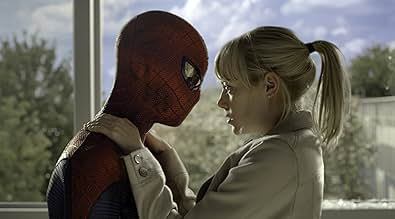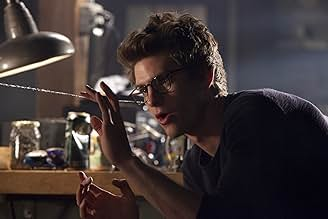Peter Parker is an orphan living with his aunt and uncle, a talented geek, skater, and photographer with a tender heart devoted to his classmate Gwen Stacy. This blonde, perpetually in leggings, is a senior intern for Dr. Curt Connors, Peter’s mysteriously deceased father’s one-armed friend, who dreams of the interchangeability of human and iguana stem cells. Only a spider can unravel this intricate web of circumstances.

The Genesis of a Teen Superhero
In 1962, when Stan Lee, writer and editor at Marvel, conceived a new character, it struck him: comics are read by teenagers, so the new character should be their age. Thus, Spider-Man was born – a teenager for whom superhuman abilities became a circumstance complicating the natural difficulties of growing up. Sam Raimi, the director of the first film trilogy about Peter Parker, understood this perfectly. His “Spider-Man” presented the viewer with a wide-eyed adolescent discovering new powers, as is always the case with diligent boys. Stan Lee’s world came to life, lit up, colored, and stirred, with only the protagonist remaining slightly anemic.

A Fresh Take on a Familiar Story
Inviting the director of “500 Days of Summer” to the director’s chair seems much more logical in this context than it initially appears. The three-dimensional machinery of special effects masters has long been able to spark on its own (take the recent “Battleship”), but only Iron Man can still boast the liveliness of character. Webb secured the support of James Vanderbilt, the screenwriter of Fincher’s “Zodiac,” and the final component of success was to be the lead actor. Of course, Tobey Maguire looks purely psychophysically as if his face was drawn in the mid-sixties, but someone fundamentally different was needed here. Someone like Andrew Garfield, who gives the character volume with just one facial expression, without tearing the sacred pages of half-century-old storyboards.

The Realism of the Amazing Spider-Man
“The Amazing Spider-Man” impresses, first of all, with its unobtrusive realism. Webb throws in eye-pleasing details here and there: from a Ramones hoodie to how the hero rejoices at every opportunity to take off the uncomfortable rubber mask and generally doesn’t favor his spandex suit. In terms of sincerity and humanity, the film unexpectedly resembles the domestic “Black Lightning” in places – especially in the scene where Martin Sheen (Uncle Ben) scolds Garfield’s character with the authenticity of Sergei Garmash. Having studio millions at his disposal, Webb remained a person who knows how to capture the joy of youth with a lens, which cannot be overshadowed by bruises, green monsters, or even death. As in “500 Days of Summer,” he is interested not in the story of the feat and not even in the love story itself, but in the huge world lying at the feet at 17, promising only miracles and the fulfillment of dreams.

A Different Kind of Hero
Raimi’s “Spider-Man” was a mutant version of Captain America with his notorious sense of duty and a forelock ready for camera flashes. Webb and Garfield’s Peter Parker doesn’t want to be an outcast and put the web in the service of the national flag. He would like to learn to jump better, kick the classmates’ asses, ensnare a blonde, and save his loved ones.
Simply put, “The Amazing Spider-Man” for the first time, it seems, in the history of film comics, says that superpowers are not something to be afraid of. First of all, it’s very, very cool.
